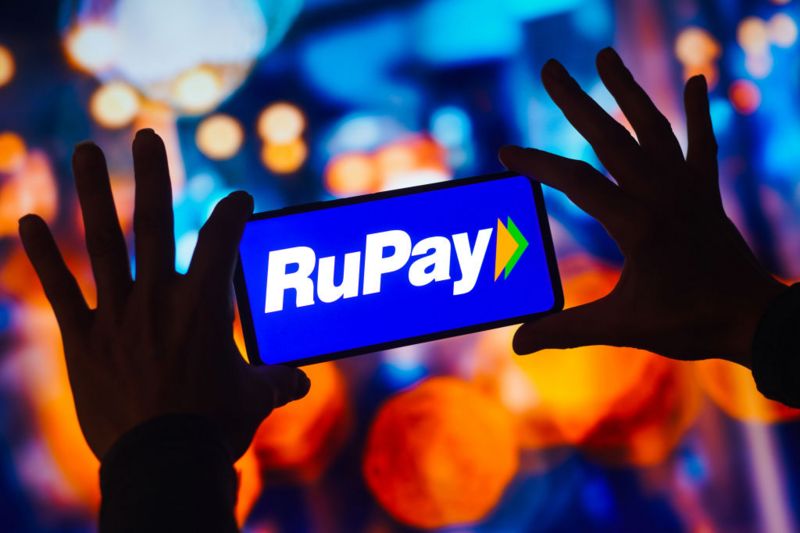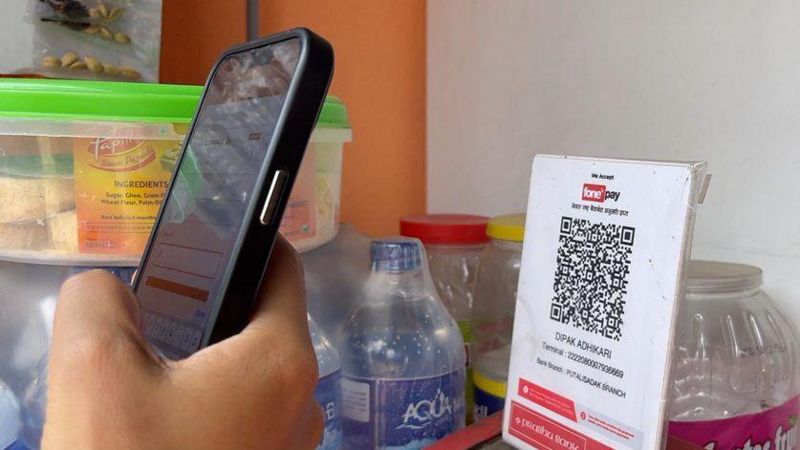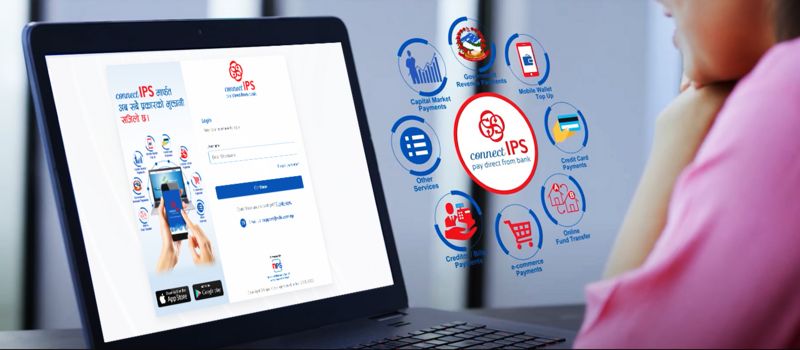Breaking News: Nepal and India to Implement QR Code Payments - Are You Ready?
QR Code payments are a recent innovation that allows for quick, secure, and seamless transactions. With the rapid pace of technological advancements, it comes as no surprise that Nepal and India are joining hands to implement QR Code payments on a national scale. In this article, we discuss the current state, benefits, challenges, and future trends of QR Code payments in both countries. Additionally, we cover the payment infrastructure, security and privacy concerns, consumer adoption, integration with other payment methods, guidelines for merchants, impact on businesses, opportunities for fintech companies, case studies, user experience, the role of the government, and conclude with FAQs and resources for further information.
Introduction
QR Code payments provide a reliable and efficient way to conduct transactions through a simple scan of a code on a mobile device. These payments are increasingly popular in many countries and can enhance the financial ecosystem by providing new opportunities for businesses and consumers alike. Nepal and India have embarked on a journey to implement QR Code payments on a nationwide basis, and the following sections cover the relevant details.
Explanation of QR Code Payments
QR Code payments are an innovative way of conducting transactions. They enable users to pay for goods and services without cash through a mobile device by using a QR code. The code is scanned by the sender, and the payment is transferred to the recipient. The transaction can happen in seconds, which makes it highly efficient.
Nepal and India's Initiative to Implement QR Code Payments
Both Nepal and India are taking the lead in implementing QR Code payments. This move aims to boost the economies of these countries by minimizing the use of cash, increasing financial inclusion, and easing transactions. With the implementation of this payment technology, businesses and consumers are expected to benefit significantly.
QR Code Payments in Nepal
Current State of e-Payment Market in Nepal
In Nepal, the e-payment market is still in its early stages. However, with the growth of mobile and internet infrastructure, it is expected to see significant growth in the coming years. Currently, the market is dominated by cash transactions, which are inconvenient and prone to fraud.
Benefits of QR Code Payments in Nepal
QR Code payments will provide significant benefits for the Nepalese economy. They offer a quick, safe, and secure transaction method that can significantly reduce reliance on cash. This technology can support financial inclusion and enable more people to access banking and financial services.
Challenges of QR Code Payments in Nepal
The introduction of QR code payments in Nepal faces several challenges. These challenges include a lack of infrastructure, low payment literacy, and regulations. Additionally, there are security concerns that must be addressed to ensure user trust in the system.
Future Trends of QR Code Payments in Nepal
QR Code payments are expected to gain momentum in Nepal in the upcoming years. The growth in mobile and internet infrastructure will create opportunities for more people to use digital payments. The government's efforts to promote digital financial services will also support the growth of QR code payments.
QR Code Payments in India
Current State of e-Payment Market in India
India has a rapidly growing e-payment market. The widespread adoption of mobile phones, increased internet penetration, and government initiatives have led to significant growth. The market is dominated by cash transactions, but digital payment methods are quickly gaining popularity.
Benefits of QR Code Payments in India
Implementing QR Code payments will provide several benefits in India, including the reduction in cash usage, improved efficiency, convenience, and security. This technology can also help to reduce the incidence of counterfeit currency and improve financial inclusion.
Challenges of QR Code Payments in India
The implementation of QR Code payments in India will face several challenges, including limited infrastructure, low payment literacy, trust issues, and regulatory measures. Addressing these issues is crucial to ensure the success and sustainability of QR Code payments.
Future Trends of QR Code Payments in India
QR code payments are expected to continue growing in popularity in India. The government's efforts to promote digital financial services, the rapidly increasing internet and mobile infrastructure, and growing consumer demand will drive the adoption of QR Code payments.
QR Code Payment Infrastructure
Explanation of Payment Infrastructure
Payment infrastructure refers to the network of institutions, services, and technologies that enable transactions to occur. It includes banks, payment processors, mobile network operators, financial technology (FinTech) companies, and merchants.
Development of QR Code Payment Infrastructure in Nepal
The development of QR code infrastructure in Nepal is still in its early stages, but it is expected to grow with the government's promotion of digital financial services. Financial institutions and FinTech companies are already developing and implementing QR code payment methods.
Development of QR Code Payment Infrastructure in India
India's payment infrastructure is currently undergoing significant growth with the adoption of various digital payments methods. Several financial institutions and FinTech companies have already developed QR code payment options, and many more are expected to join the trend.
Comparison of the Two Countries' Payment Infrastructure
Nepal and India have different payment infrastructures, with India having a more advanced system compared to Nepal. However, both countries have similar objectives of promoting digital payment methods and reducing the use of cash.
Security and Privacy in QR Code Payments
Explanation of Security and Privacy Issues
Security and privacy are crucial aspects of QR code payments. Security concerns can arise from unauthorized access, fraud, and hacking, while privacy issues can arise from the unauthorized collection and use of personal information.
Security Measures in Place for QR Code Payments
Several security measures are in place to ensure the safety of QR code payments. These measures include encryption techniques, firewalls, tokenization, and multi-factor authentication.
Privacy Concerns for QR Code Payments
QR code payments do present privacy concerns since they involve the collection of user data for transactions. This data must be protected from unauthorized access and use.
Measures Being Taken to Address Privacy Concerns
Regulatory institutions are taking measures to address the privacy concerns of QR code payments. These measures include data protection regulations, privacy policies, and increased data security measures.
Implementation of QR Code Payments
Implementation Timeline in Nepal
The implementation timeline of QR code payments in Nepal is still unclear. However, financial institutions and FinTech companies have already started developing and testing mobile payment solutions.
Implementation Timeline in India
QR code payments have been implemented in India, and several financial institutions and FinTech companies have already developed and implemented QR code payment solutions.
Steps to Implement QR Code Payments in Businesses
To implement QR code payments in businesses, merchants must register with financial institutions or FinTech companies that offer the service. Merchants require a stable internet connection, a mobile device, or a Point of Sale (POS) system that is compatible with QR code technology.
Necessary Equipment for QR Code Payments
Merchants require a mobile device or a POS system that can scan QR codes, an internet connection, and proper software for enabling QR code payments.
Consumer Adoption of QR Code Payments
Explanation of Consumer Adoption
Consumer adoption refers to the extent to which consumers use a particular payment method. High consumer adoption is crucial for the success of QR code payments.
Consumer Readiness for QR Code Payments in Nepal
Consumer readiness for QR code payments in Nepal is relatively low due to limited payment options and infrastructure. However, the growth in mobile and internet infrastructure is expected to increase consumer readiness.
Consumer Readiness for QR Code Payments in India
Consumer readiness for QR code payments in India is high due to the widespread adoption of digital payment methods and the government's promotion of digital financial services.
Benefits to Consumers for Using QR Code Payments
Consumers who use QR code payments can benefit from the convenience, efficiency, and security of this payment method compared to traditional cash payments.
Potential Challenges to Consumer Adoption of QR Code Payments
Potential challenges for consumer adoption of QR code payments include inadequate payment infrastructure, limited payment literacy, and trust issues.
Integration of QR Code Payments with Other Payment Methods
Explanation of Integration Between QR Code Payments and Other Payment Methods
It is crucial to integrate QR code payments with other payment methods to provide a seamless payment experience for customers.
Possibilities of Integration in Nepal
Integrating QR code payments with other payment methods in Nepal is still in its early stages, but it is expected to expand with the growth of digital payment infrastructure.
Possibilities of Integration in India
India has already integrated QR code payments with other payment methods, including digital wallets, Unified Payment Interface (UPI), and bank transfers.
Benefits of Integration for Businesses and Consumers
Integration provides several benefits for businesses and consumers, including a more seamless and efficient payment experience, reduced costs, and increased market share.
Guidelines for Merchants
Explanation of Guidelines
Guidelines provide businesses with a blueprint for implementing QR code payments. They specify the requirements and best practices for QR code payments.
Guidelines for Merchants in Nepal
The government of Nepal has not issued any guidelines for merchants yet. However, the best practices for QR code payments include maintaining security and privacy measures, providing user-friendly interfaces, and ensuring compatibility with multiple devices.
Guidelines for Merchants in India
The Reserve Bank of India has issued guidelines for merchants that include security protocols, transaction limits, and maintaining transaction records.
Necessary Support for Merchants
Merchants require support from financial institutions or FinTech companies to implement and maintain QR code payments. The required support includes training, technical assistance, and customer service.
Impact on Businesses
Benefits of QR Code Payments for Businesses
QR code payments offer several benefits for businesses, including reduced cash handling costs, increased efficiency, improved customer experience, and access to a broader market.
Costs and Investment for Businesses
Merchants incur initial costs to invest in the necessary equipment for QR code payments and potentially increased transaction fees for payment processing.
Preparing Businesses for QR Code Payments
Merchants must prepare for QR code payments by adopting compatible equipment, training staff, and integrating payment processes.
Impact on Business Competition
QR code payments may introduce new competition to traditional cash payments and credit/debit card payments. This competition may lead to lower costs, improved efficiency, and increased market share.
Opportunities for Fintech Companies
Explanation of Fintech Companies
Fintech companies are organizations that provide financial services through innovative technology solutions.
Opportunities for Fintech Companies in Nepal
Fintech companies in Nepal can develop QR code payment solutions that can solve the challenges facing the country's payment ecosystem. These solutions can also increase financial inclusion and enable more people to access banking and financial services.
Opportunities for Fintech Companies in India
Fintech companies in India have already developed several innovative financial solutions. The adoption of QR Code payments creates significant opportunities for these companies to expand their service offerings.
Benefits of Fintech Companies for QR Code Payments
Fintech companies can offer innovative solutions that cater to the needs of businesses and consumers to enhance the growth and adoption of QR Code payments.
Comparison with Other Payment Methods
Comparison with Traditional Cash Transactions
QR code payments provide several advantages over traditional cash transactions, including increased efficiency, reduced handling costs, and improved security.
Comparison with Digital Wallets
QR code payments are similar to digital wallet payments as they both use mobile devices to conduct transactions. However, QR code payments are more convenient and do not require specialized software.
Comparison with Credit/Debit Card Payments
QR code payments offer several advantages over credit/debit card payments, including lower fees, faster processing times, and reduced risks of fraud.
Case Studies
Case Study of QR Code Payments in Nepal
There is yet to be an official case study on QR Code payments in Nepal. However, the implementation of this payment method is expected to create numerous benefits for the country.
Case Study of QR Code Payments in India
The implementation of QR Code payments in India has significantly improved the digital payment system in the country. It has provided a convenient, efficient, and secure payment system for consumers and businesses alike.
Lessons Learned from Other Countries' Implementation of QR Code Payments
The adoption of QR code payments in other countries provides valuable lessons for Nepal and India on what works and what does not. This knowledge can help to avoid mistakes and streamline their implementation processes.
User Experience of QR Code Payments
Explanation of User Experience
The user experience refers to the ease of use, convenience, and satisfaction of customers using QR code payments.
Ease of Use for Consumers
QR code payments are easy to use, only requiring a mobile device with a camera and a compatible app or device.
Payment Completion Process for Consumers
The payment completion process is quick and seamless. Consumers only need to scan the QR code, confirm the transaction and input their security details.
Comparison with Other Payment Methods
QR code payments offer a more straightforward, convenient, and secure payment method compared to other payment options.
Future of QR Code Payments
Predicted Future Trends in QR Code Payments
QR code payments are expected to continue growing in popularity, becoming the preferred payment method for many consumers.
Possible Improvement for QR Code Payments
Further advancements in QR code technology, such as enhanced encryption, improved integration, and more comprehensive payment options, are possible.
Adoption in Other Countries
The success of QR code payments in Nepal and India may lead to their adoption in other countries that seek to improve their payment ecosystems.
The Role of Government
Explanation of Government Role
Governments play a crucial role in promoting financial inclusion and innovation. They provide the regulatory framework and support necessary for the successful implementation of QR code payments.
Steps Taken by the Government
Both Nepal and India are taking steps to promote the growth of digital payments and expand access to financial services.
Support for Implementation of QR Code Payments
The government provides support for the implementation of QR code payments by promoting the development of digital payment systems, providing financial support through subsidies and incentives, and issuing guidelines and regulatory measures.
Conclusion
QR code payments are an innovative payment method that offers numerous benefits for businesses and consumers. Nepal and India have made significant progress in the implementation of QR code payments. This technology can reduce the reliance on cash, enhance financial inclusion, and provide a more seamless and secure payment ecosystem. To ensure the success and sustainability of QR code payments, challenges such as the lack of infrastructure, security and privacy concerns, and regulatory measures must be addressed. Through guidelines, support from financial institutions, and fintech companies collaborating with the government, the growth of QR code payments in Nepal and India will thrive.








0 Comments